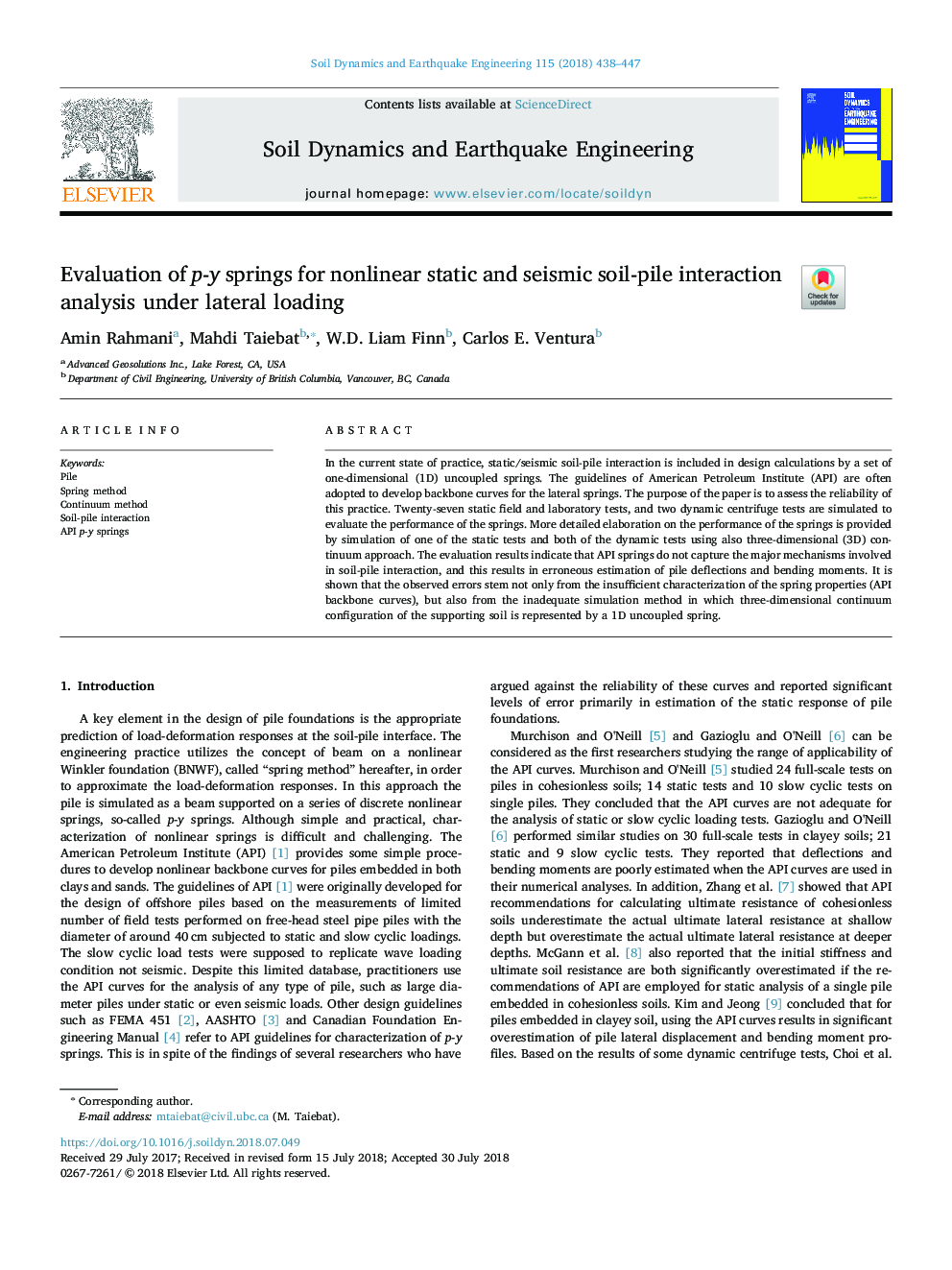| Article ID | Journal | Published Year | Pages | File Type |
|---|---|---|---|---|
| 11032530 | Soil Dynamics and Earthquake Engineering | 2018 | 10 Pages |
Abstract
In the current state of practice, static/seismic soil-pile interaction is included in design calculations by a set of one-dimensional (1D) uncoupled springs. The guidelines of American Petroleum Institute (API) are often adopted to develop backbone curves for the lateral springs. The purpose of the paper is to assess the reliability of this practice. Twenty-seven static field and laboratory tests, and two dynamic centrifuge tests are simulated to evaluate the performance of the springs. More detailed elaboration on the performance of the springs is provided by simulation of one of the static tests and both of the dynamic tests using also three-dimensional (3D) continuum approach. The evaluation results indicate that API springs do not capture the major mechanisms involved in soil-pile interaction, and this results in erroneous estimation of pile deflections and bending moments. It is shown that the observed errors stem not only from the insufficient characterization of the spring properties (API backbone curves), but also from the inadequate simulation method in which three-dimensional continuum configuration of the supporting soil is represented by a 1D uncoupled spring.
Related Topics
Physical Sciences and Engineering
Earth and Planetary Sciences
Geotechnical Engineering and Engineering Geology
Authors
Amin Rahmani, Mahdi Taiebat, W.D. Liam Finn, Carlos E. Ventura,
